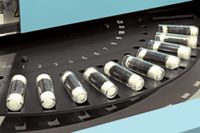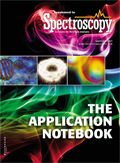Direct Mercury Analysis of Gaseous Samples Using Sorbent Tubes
Application Notebook
Direct mercury analysis is ubiquitous in analytical labs within the environmental, petrochemical, and specialty chemicals industry for analyzing mercury in solids and liquids.
Direct mercury analysis is ubiquitous in analytical labs within the environmental, petrochemical, and specialty chemicals industry for analyzing mercury in solids and liquids. These labs are also required to test for mercury in gaseous samples, at times requiring specialty instruments. With the addition of Milestone's DMA-80 sorbent tubes, labs can utilize a single system and maintain the benefits of direct analysis.
Direct mercury analysis is a technique that is ubiquitous in analytical labs within the environmental industry, petrochemical industry, and specialty chemicals industry for analyzing mercury in solid and liquid samples. However, these labs are frequently required to test for mercury in gaseous samples in addition to utilizing specialty instruments. Most conventional systems do not offer the flexibility of analyzing for these samples, which has posed a problem for direct analysis.
To address the need for a highly flexible system, Milestone Inc. offers sorbent tubes to trap mercury gases and subsequently analyze them on our standard Dual Cell (DL – 0.003 ng) or Tri Cell (DL – 0.001 ng) DMA-80 Direct Mercury Analysis Systems, offering a user the capability to directly analyze gases along with solid and liquid matrices without sample preparation. This flexibility translates into cost savings on the need for addition instrumentation, consumables and a time savings on the high throughput nature of the DMA-80.

Figure 1: Sorbent tubes ready to be analyzed on the DMA-80 system.
Sorbent Tubes
A certain pre-fixed volume of air is made to pass through a mass flow controller with the sorbent tube attached. The sorbent tubes contain a special mercury adsorbing material, which traps the mercury from the gases as they flow through the tubes. These mercury containing sorbent tubes can be directly placed on the autosampler tray and be directly analyzed along with the regular solid or liquid samples.

Table I: Mercury analysis on gas standards
Benefits of Sorbent Tubes
- High quality trap – no memory effect
- No sample digestion required
- No wet chemistry/pre-treatment needed
- Reusable sorbent traps
- 5 min per analysis
Results and Data
Triplicates of two known gaseous standards having mercury concentrations of 0.1 μg/m3 and 10 μg/m3 were collected on sorbent tubes and analyzed on the DMA-80 Tri Cell system. Their average concentration, % recovery, and RSD were calculated.
Conclusion
The sorbent tubes add tremendous flexibility to the DMA-80 direct mercury analysis system and enable a user to accurately and reproducibly analyze mercury in gaseous samples along with solid and liquid matrices without the need to invest in additional systems and while maintaining all the benefits of the direct mercury analysis technique.
Milestone, Inc.
25 Controls Drive, Shelton, CT 06484
tel. (866) 995-5100, fax (203) 925-4241
Website: www.milestonesci.com

Atomic Perspectives: Highlights from Recent Columns
March 3rd 2025“Atomic Perspectives,” provides tutorials and updates on new analytical atomic spectroscopy techniques in a broad range of applications, including environmental analysis, food and beverage analysis, and space exploration, to name a few. Here, we present a compilation of some of the most popular columns.